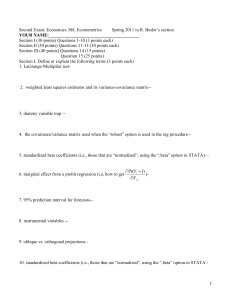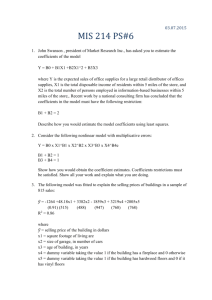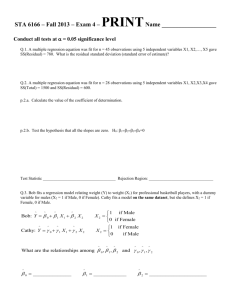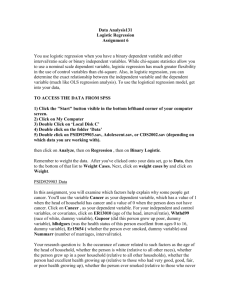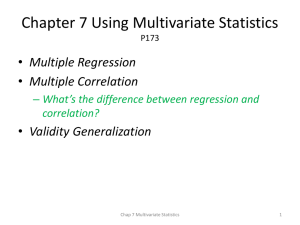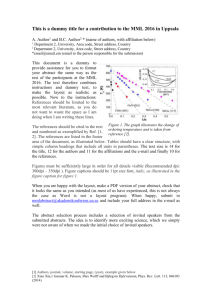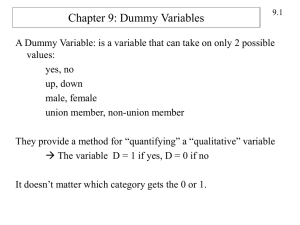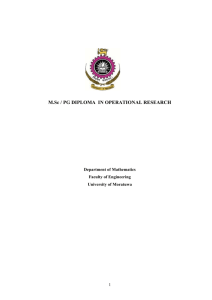Multivariate analysis
advertisement
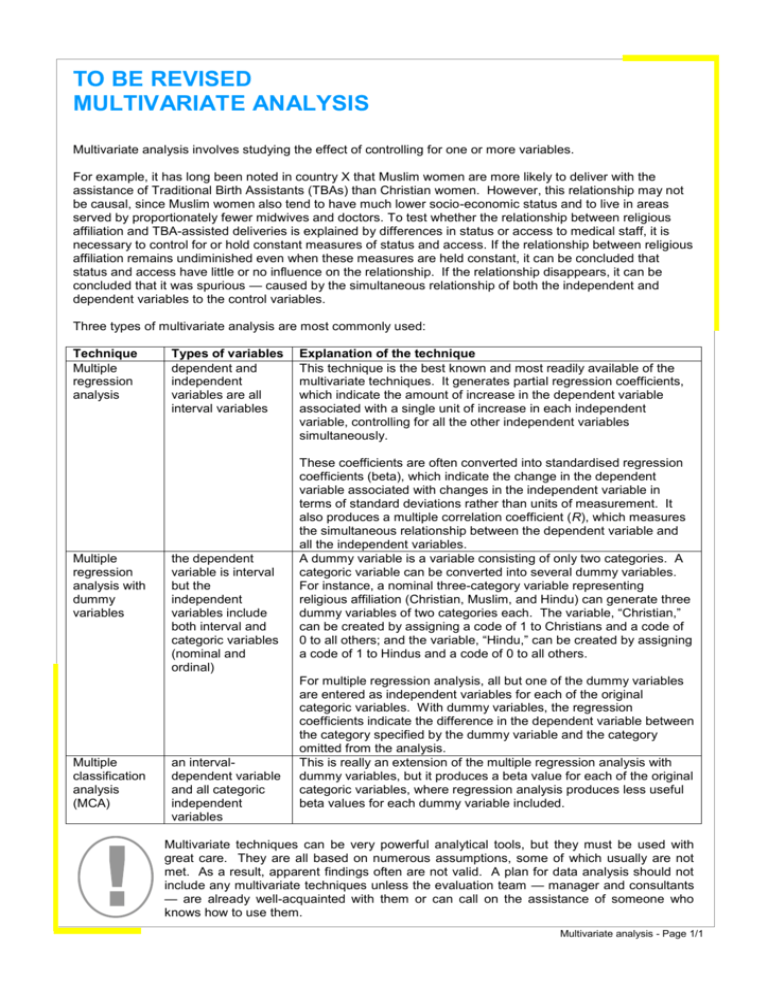
TO BE REVISED MULTIVARIATE ANALYSIS Multivariate analysis involves studying the effect of controlling for one or more variables. For example, it has long been noted in country X that Muslim women are more likely to deliver with the assistance of Traditional Birth Assistants (TBAs) than Christian women. However, this relationship may not be causal, since Muslim women also tend to have much lower socio-economic status and to live in areas served by proportionately fewer midwives and doctors. To test whether the relationship between religious affiliation and TBA-assisted deliveries is explained by differences in status or access to medical staff, it is necessary to control for or hold constant measures of status and access. If the relationship between religious affiliation remains undiminished even when these measures are held constant, it can be concluded that status and access have little or no influence on the relationship. If the relationship disappears, it can be concluded that it was spurious — caused by the simultaneous relationship of both the independent and dependent variables to the control variables. Three types of multivariate analysis are most commonly used: Technique Multiple regression analysis Multiple regression analysis with dummy variables Multiple classification analysis (MCA) Types of variables dependent and independent variables are all interval variables the dependent variable is interval but the independent variables include both interval and categoric variables (nominal and ordinal) an intervaldependent variable and all categoric independent variables Explanation of the technique This technique is the best known and most readily available of the multivariate techniques. It generates partial regression coefficients, which indicate the amount of increase in the dependent variable associated with a single unit of increase in each independent variable, controlling for all the other independent variables simultaneously. These coefficients are often converted into standardised regression coefficients (beta), which indicate the change in the dependent variable associated with changes in the independent variable in terms of standard deviations rather than units of measurement. It also produces a multiple correlation coefficient (R), which measures the simultaneous relationship between the dependent variable and all the independent variables. A dummy variable is a variable consisting of only two categories. A categoric variable can be converted into several dummy variables. For instance, a nominal three-category variable representing religious affiliation (Christian, Muslim, and Hindu) can generate three dummy variables of two categories each. The variable, “Christian,” can be created by assigning a code of 1 to Christians and a code of 0 to all others; and the variable, “Hindu,” can be created by assigning a code of 1 to Hindus and a code of 0 to all others. For multiple regression analysis, all but one of the dummy variables are entered as independent variables for each of the original categoric variables. With dummy variables, the regression coefficients indicate the difference in the dependent variable between the category specified by the dummy variable and the category omitted from the analysis. This is really an extension of the multiple regression analysis with dummy variables, but it produces a beta value for each of the original categoric variables, where regression analysis produces less useful beta values for each dummy variable included. Multivariate techniques can be very powerful analytical tools, but they must be used with great care. They are all based on numerous assumptions, some of which usually are not met. As a result, apparent findings often are not valid. A plan for data analysis should not include any multivariate techniques unless the evaluation team — manager and consultants — are already well-acquainted with them or can call on the assistance of someone who knows how to use them. Multivariate analysis - Page 1/1
